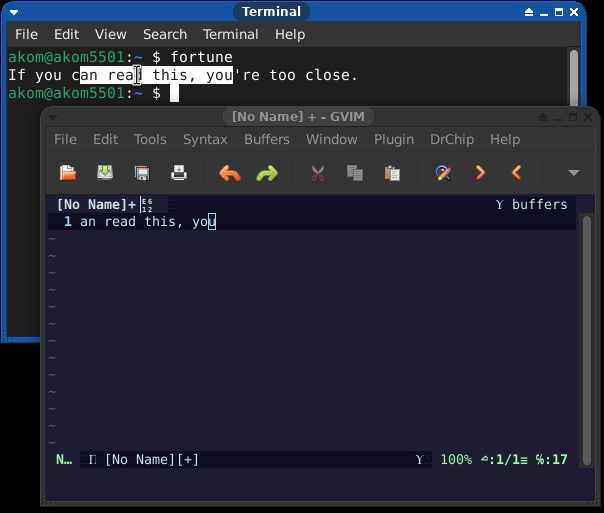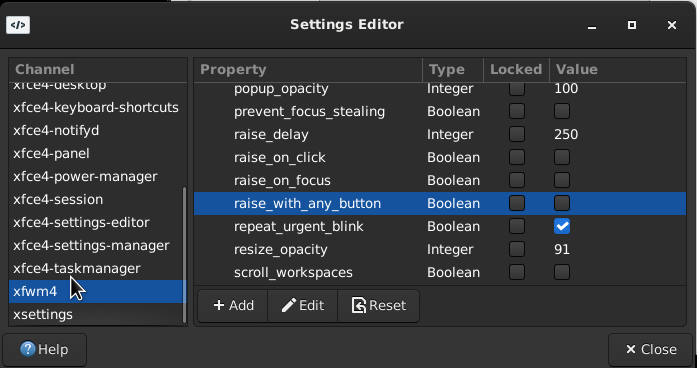 XFCE: Chrome Steals Focus on click despite mouse-focus mode
XFCE: Chrome Steals Focus on click despite mouse-focus mode
Posted by Admin • Thursday, February 29. 2024 • Category: Linux
I like to use mouse-focus mode in Linux (XFCE), which also means that I don't want windows to get raised on click. This means, for example, that I can have a piece of a window visible but not raised and copy something to/from there:

However, Google Chrome does not honor this window manager setting. Any click in a chrome window causes it to be raised.
It turns out that, with XFCE's xfwm, there is an additional setting to turn off in gconf:


